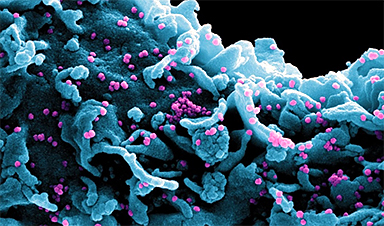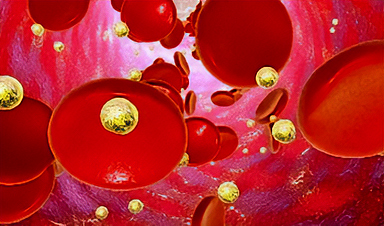Viruses originating from birds and animals are known as zoonotic viruses. When these viruses are transmitted to humans through direct or indirect contact with infected populations, they cause a zoonotic spillover. Approximately 70% of infectious diseases over the last three decades are zoonotic. Because no immediate diagnosis or effective cure is available for the new virus, outbreaks, epidemics, and pandemics are likely to spread rapidly.
Background
Such viruses include Influenza A, Ebola, and three coronaviruses. Coronaviruses (CoV) have caused life-threatening epidemics such as severe acute respiratory syndrome (SARS)-CoV and the Middle East respiratory syndrome (MERS)-CoV in the last five decades. The ongoing COVID-19 (coronavirus disease 2019) pandemic is one such zoonotic virus that has rapidly caused over 211 million infections and over 4.43 million deaths worldwide since December 2019. The severe acute respiratory syndrome virus (SARS-CoV-2), the etiological agent of COVID-19, is a novel coronavirus strain transmitted by mammals.
Viruses and nanoparticles are in a comparable size range. The latter having attractive properties such as small size, large surface-to-volume ratio, susceptibility to modification, and intrinsic viricidal activity. Therefore, scientists functionalize nanoparticles to act against these pathogenic viruses in a clinical strategy. In a recent review published in the journal Microbial Pathogenesis, researchers look at the novel solutions against zoonotic viruses provided by nanotechnology.
Scope and classification of nanomaterials
Nanomaterials are described as ‘materials containing structural nanoelements which considerably improve or cause qualitatively new physical, chemical, biological, mechanical, and other properties.’ Excellent properties like the high surface area to volume ratio, high thermal conductivity, and faster signal transduction make the nanomaterials useful in clinical and biomedical applications. For example, nanomaterials in viral diagnostics have advanced sensitivity, the capability of multiplexing, and cost-effectiveness.
Detection of viruses
Rapid and reliable diagnostics is crucial to defend against any viral outbreak, especially in the case of a highly virulent strain. Conventional molecular diagnostic techniques rely on the amplification of the viral nucleic acids. However, these methods are time-consuming processes with lower specificity and accuracy – nanotechnology can remarkably address the challenges. Immobilizing specific ligands on the nanometric scale, nanotechnology is employed for molecular imaging and profiling in diagnostics.
Nanosensors, for rapid biosensing of virus-associated proteins, are advances in nanotechnology that are widely employed. Nano-sensors are nanoparticle-based devices that can sense signals at a nanoscale comprising three major components; a signal transducer, a receiver, and a detector with a monitoring output. Using these highly sensitive nano-sensors along with other analyzing instruments increases the detection efficiency and also helps deal with the point-of-care type (POCT) pervasive detection systems.
Novel magnetic relaxation nanosensors are used to rapidly detect influenza-associated proteins, adenovirus, and Herpes simplex virus (HSV). Few examples include: multiplex colorimetric paper-based analytical devices using silver nanoparticles can detect MERS-CoV, gold nanoparticles and quantum dots stain for HPV (Human papillomavirus), and chiroimmunosensors can detect infectious bronchitis virus.
News
Nanocrystals Carrying Radioisotopes Offer New Hope for Cancer Treatment
The Science Scientists have developed tiny nanocrystal particles made up of isotopes of the elements lanthanum, vanadium, and oxygen for use in treating cancer. These crystals are smaller than many microbes and can carry isotopes of [...]
New Once-a-Week Shot Promises Life-Changing Relief for Parkinson’s Patients
A once-a-week shot from Australian scientists could spare people with Parkinson’s the grind of taking pills several times a day. The tiny, biodegradable gel sits under the skin and releases steady doses of two [...]
Weekly injectable drug offers hope for Parkinson’s patients
A new weekly injectable drug could transform the lives of more than eight million people living with Parkinson's disease, potentially replacing the need for multiple daily tablets. Scientists from the University of South Australia [...]
Most Plastic in the Ocean Is Invisible—And Deadly
Nanoplastics—particles smaller than a human hair—can pass through cell walls and enter the food web. New research suggest 27 million metric tons of nanoplastics are spread across just the top layer of the North [...]
Repurposed drugs could calm the immune system’s response to nanomedicine
An international study led by researchers at the University of Colorado Anschutz Medical Campus has identified a promising strategy to enhance the safety of nanomedicines, advanced therapies often used in cancer and vaccine treatments, [...]
Nano-Enhanced Hydrogel Strategies for Cartilage Repair
A recent article in Engineering describes the development of a protein-based nanocomposite hydrogel designed to deliver two therapeutic agents—dexamethasone (Dex) and kartogenin (KGN)—to support cartilage repair. The hydrogel is engineered to modulate immune responses and promote [...]
New Cancer Drug Blocks Tumors Without Debilitating Side Effects
A new drug targets RAS-PI3Kα pathways without harmful side effects. It was developed using high-performance computing and AI. A new cancer drug candidate, developed through a collaboration between Lawrence Livermore National Laboratory (LLNL), BridgeBio Oncology [...]
Scientists Are Pretty Close to Replicating the First Thing That Ever Lived
For 400 million years, a leading hypothesis claims, Earth was an “RNA World,” meaning that life must’ve first replicated from RNA before the arrival of proteins and DNA. Unfortunately, scientists have failed to find [...]
Why ‘Peniaphobia’ Is Exploding Among Young People (And Why We Should Be Concerned)
An insidious illness is taking hold among a growing proportion of young people. Little known to the general public, peniaphobia—the fear of becoming poor—is gaining ground among teens and young adults. Discover the causes [...]
Team finds flawed data in recent study relevant to coronavirus antiviral development
The COVID pandemic illustrated how urgently we need antiviral medications capable of treating coronavirus infections. To aid this effort, researchers quickly homed in on part of SARS-CoV-2's molecular structure known as the NiRAN domain—an [...]
Drug-Coated Neural Implants Reduce Immune Rejection
Summary: A new study shows that coating neural prosthetic implants with the anti-inflammatory drug dexamethasone helps reduce the body’s immune response and scar tissue formation. This strategy enhances the long-term performance and stability of electrodes [...]
Scientists discover cancer-fighting bacteria that ‘soak up’ forever chemicals in the body
A family of healthy bacteria may help 'soak up' toxic forever chemicals in the body, warding off their cancerous effects. Forever chemicals, also known as PFAS (per- and polyfluoroalkyl substances), are toxic chemicals that [...]
Johns Hopkins Researchers Uncover a New Way To Kill Cancer Cells
A new study reveals that blocking ribosomal RNA production rewires cancer cell behavior and could help treat genetically unstable tumors. Researchers at the Johns Hopkins Kimmel Cancer Center and the Department of Radiation Oncology and Molecular [...]
AI matches doctors in mapping lung tumors for radiation therapy
In radiation therapy, precision can save lives. Oncologists must carefully map the size and location of a tumor before delivering high-dose radiation to destroy cancer cells while sparing healthy tissue. But this process, called [...]
Scientists Finally “See” Key Protein That Controls Inflammation
Researchers used advanced microscopy to uncover important protein structures. For the first time, two important protein structures in the human body are being visualized, thanks in part to cutting-edge technology at the University of [...]
AI tool detects 9 types of dementia from a single brain scan
Mayo Clinic researchers have developed a new artificial intelligence (AI) tool that helps clinicians identify brain activity patterns linked to nine types of dementia, including Alzheimer's disease, using a single, widely available scan—a transformative [...]





















